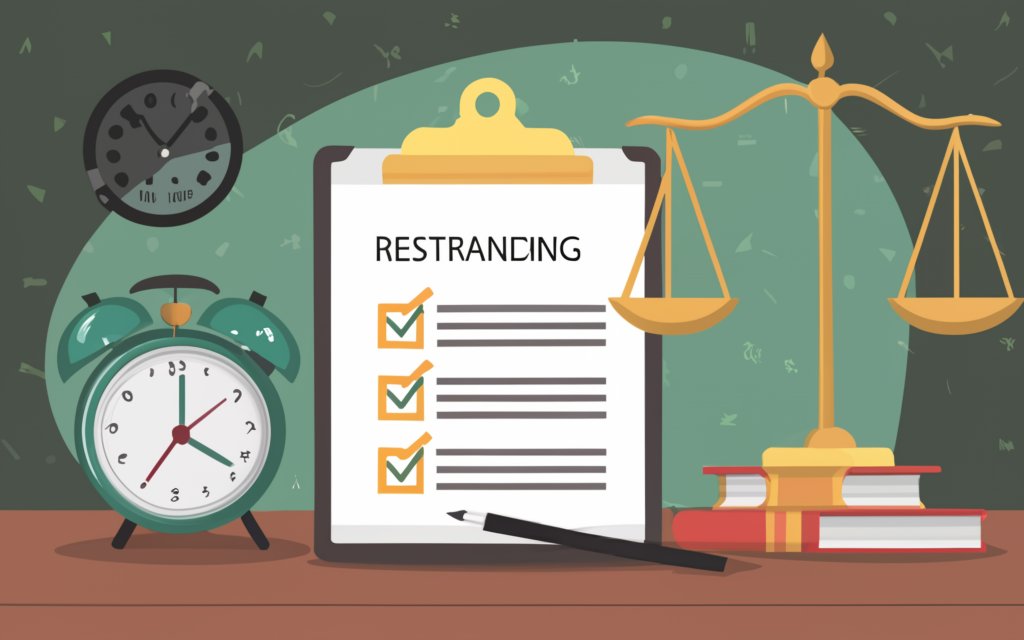Table of Contents
A restraining order is a legal tool that protects against harassment, abuse, or threats. If you are considering filing one or are subject to one, you may be wondering, how long does a restraining order last? Understanding the duration, types, and effects of restraining orders is crucial. How Long Does a Restraining Order Last? This article will break down everything you need to know in simple, clear terms.

What Is a Restraining Order?
Before discussing how long a restraining order lasts, it’s essential to understand what one is. A restraining order is a court order designed to protect a person from harm or harassment by requiring the offender to stay away from them. How Long Does a Restraining Order Last? The person seeking the order is often referred to as the “protected person,” while the individual the order is filed against is the “restrained person.”
How Long Does a Restraining Order Last? Depending on the situation, there are different types of restraining orders, each serving to keep individuals safe from harm.
Types of Restraining Orders
The length of a restraining order depends on the type. The most common restraining orders include:
Emergency Protective Order (EPO)
An Emergency Protective Order is typically issued by law enforcement or a judge in urgent situations where immediate protection is needed. This type of order can be issued without the restrained person being present. How long does a restraining order like an EPO last? An EPO generally lasts between 5 to 7 days, giving the protected person time to file for a longer-term order.
Temporary Restraining Order (TRO)
A Temporary Restraining Order (TRO) is often the next step after an emergency order. It is designed to provide protection until a court hearing can be held. How long does a TRO last? A TRO usually lasts 20 to 25 days or until the scheduled court hearing, at which point the judge will determine whether a more permanent restraining order is necessary.
Permanent Restraining Order
Following a court hearing, a judge may issue a Permanent Restraining Order if they find that the restrained person poses an ongoing threat. Despite its name, how long does a permanent restraining order last? In most cases, these orders are not truly permanent. They usually last between 1 to 5 years, depending on the circumstances. The protected person can request an extension before the order expires.
Criminal Restraining Order
A Criminal Restraining Order is issued as part of a criminal case, typically after an arrest for domestic violence, stalking, or similar offenses. How long does a criminal restraining order last? The duration depends on the outcome of the criminal case and can remain in effect as long as the criminal proceedings are ongoing or for the length of the convicted person’s sentence.
Also read: How Does IRS Verify Solar Credit? Ensure Your Smooth Approval
Factors That Affect How Long does a Restraining Order Lasts
How Long Does a Restraining Order Last? Several factors can influence how long a restraining order lasts:
Type of Threat or Harm
The severity of the threat or harm often determines the length of the restraining order. For example, if the protected person is in immediate danger, the court may issue a longer-lasting order to ensure their safety.
Court’s Decision
Ultimately, the judge decides how long the order will be in effect. They may issue a shorter order if they believe the threat will diminish over time or a longer one if the risk is ongoing.
Requests for Extension
The protected person can request an extension before a permanent restraining order expires. If the court believes there is still a threat, it can extend the order for additional years.
What Happens When a Restraining Order Expires?
Once a restraining order expires, the restrained person is no longer legally required to follow its terms. How Long Does a Restraining Order Last? However, if the protected person still feels unsafe, they have the option to file for a new order or extend the current one.
How to Extend a Restraining Order
If the expiration date is approaching, the protected person can request an extension by filing paperwork with the court. How Long Does a Restraining Order Last? They must usually show that the threat still exists, and the judge will decide whether to extend the order.
Consequences of Ignoring an Expired Order
It’s important to note that once a restraining order expires, the restrained person is no longer bound by its terms. If the protected person feels unsafe, they should not rely on the expired order for protection.
What Happens If a Restraining Order Is Violated?
How Long Does a Restraining Order Last? If someone violates a restraining order, it is considered a serious offense and can result in legal consequences. These consequences can vary depending on the type of order and the nature of the violation.
Penalties for Violating a Restraining Order
Penalties for violating a restraining order can include:
- Fines: The restrained person may have to pay fines.
- Jail Time: Violating a restraining order can lead to jail or prison sentences, especially for repeated offenses.
- Probation: Some violators are placed on probation, during which they must follow certain rules, including no contact with the protected person.
Reporting a Violation
If the protected person believes the order has been violated, they should report it to law enforcement immediately. The police can take action to enforce the order and may arrest the person who violated it.
How to Get a Restraining Order

If you need protection and are wondering how to obtain a restraining order, the process is relatively straightforward but requires careful attention to detail.
Filing for a Restraining Order
To file for a restraining order, you typically need to go to your local courthouse and complete the necessary paperwork. You will describe the situation and provide any evidence of threats or harm. A judge will then review your request and may issue a temporary order.
Court Hearing for a Permanent Order
If you are seeking a permanent restraining order, you will need to attend a court hearing. The judge will hear from both parties and decide whether to issue a long-term order based on the evidence provided.
To sum up, how long does a restraining order last? The duration depends on the type of order, the severity of the threat, and the court’s decision. Emergency Protective Orders may last just a few days, while Permanent Restraining Orders can remain in effect for up to 5 years or longer if extended. How Long Does a Restraining Order Last? It’s crucial to understand the different types of orders and the steps involved in obtaining, enforcing, or extending them.

